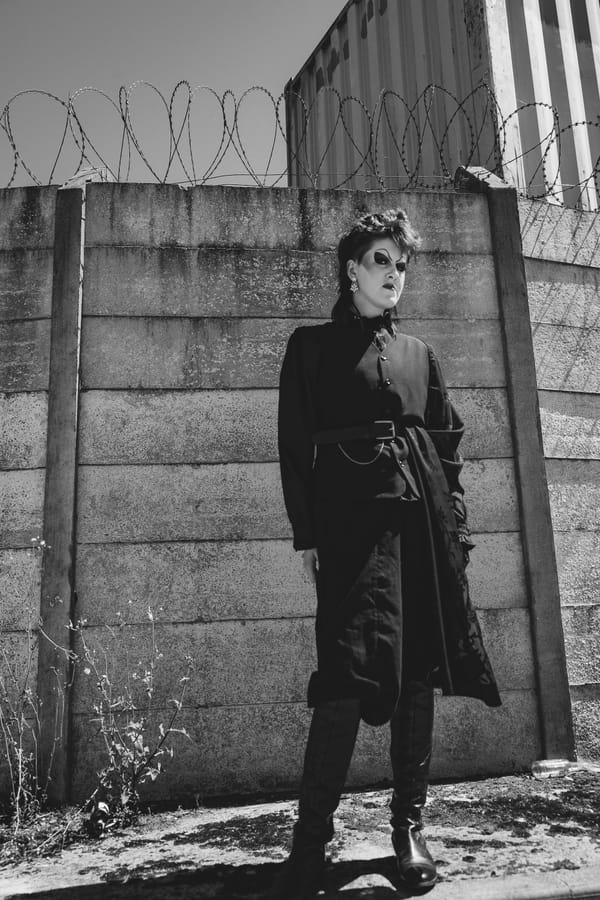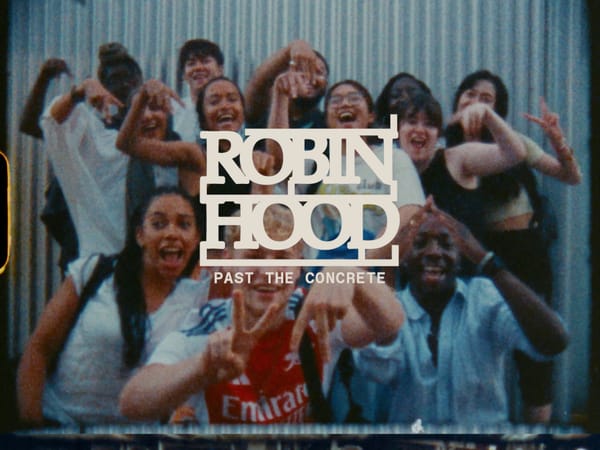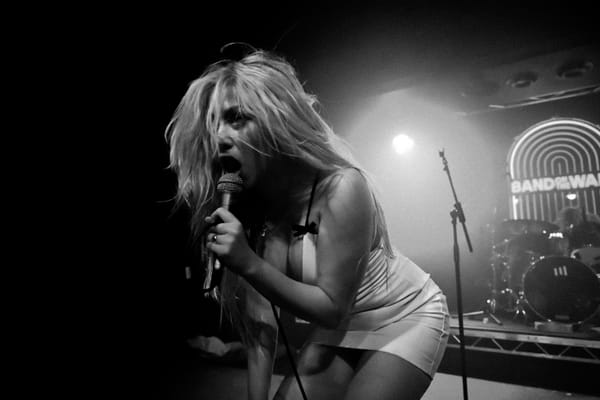SCORE!: In Conversation with Eva Dixon
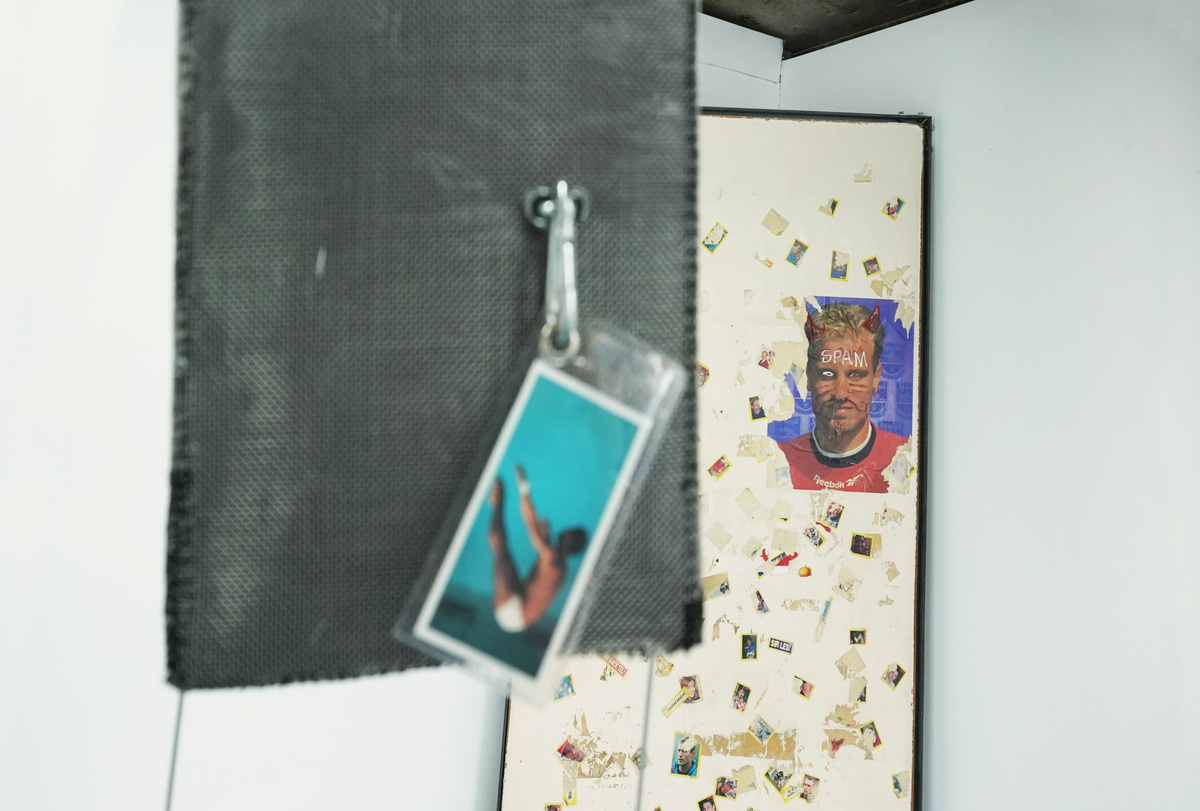
Eva Dixon’s inaugural solo exhibition, SCORE! features a dynamic cast. The Ipswich football team, WWF wrestlers, sex workers, a lone diver. Appearing on collectible cards sourced by the artist, these characters appear in control. Though the cards name real individuals, they often read as archetypal, exaggerated ideals of hyper masculinity or hyper femininity. Dixon has a deft way of framing paradoxes, literally and metaphorically. Always playful, she highlights that the more something epitomises heterosexuality, the more it becomes camp. Jock-themed porn, fetishwear and parties are examples of how gay culture appropriates sport. In the artist’s own football work, the Ipswich team recede and emerge from a surface of glitter-covered construction mesh. The treasured cards have been folded or clipped, sometimes rendering the men anonymous bodies: it’s material that’s Dixon’s star player.
In the 1960s, art historian and critic Leo Steinberg wrote of what he saw as a critical shift in painting, a ‘tilt’ in orientation. For Steinberg, prior painting had been ‘vertical’, meaning it was oriented towards a viewer standing upright. However abstract the painting, compositions were still directed head to foot. Steinberg believed artists such as Robert Rauschenberg had moved toward a different way of painting altogether - a ‘horizontal flatbed’. Horizontal painting resembles surfaces: ‘tabletops, studio floors.. Bulletin boards.. any receptor surface on which data is entered’. These kinds of works don’t evoke depictions of the real world, but our very processes of receiving information.
Dixon’s practice, like Rauschenberg, also escapes the confines of a two-dimensional picture plane, with works becoming a ‘receptor’. Drawing upon her family history in trade, her surfaces recall sites of manual labour, converging it with the visual languages of sex, gender and fan culture. Images or logos are applied with force; chained, clamped and penetrating the structure of each work. Dixon’s assemblages instil weight and dimension to the flat picture: she makes ‘things’ - picture or material - look corporeal. In Knock Out, the veins of plastic wrap enclose the flexed muscles of wrestlers. Stretched over, held taut and exposing their frames, Dixon’s works often materialise desire. Desire as a state of suspension. A subtle, unresolved tension of fabric that rivals the immediacy of the erotic image.
—
Desire reaches in front of me like a limb. I'm so tight. Sinews pulled together like mesh, I hold it so beautiful you see what I’m kept in. Unstitch me, I want to be an open body too. Look down at all that blue. I got sick and even water was shaking to touch me
Press text by Anna Moss.
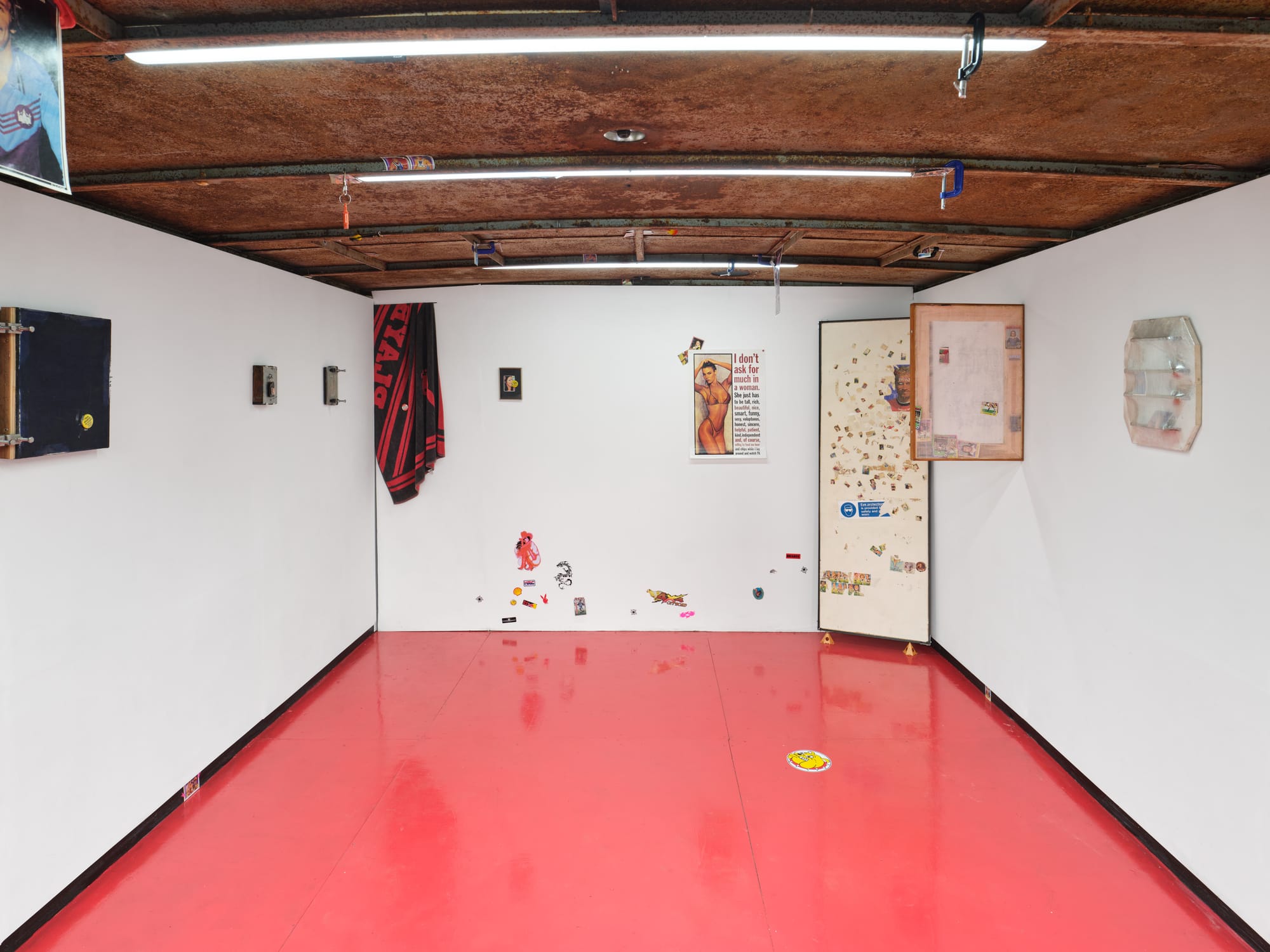
Eva Dixon, who appeared in GRASS Issue 5, has launched her first solo exhibition, SCORE!, a show that reimagines collectible culture through themes of power, fandom, and desire. I met Eva at Split Riviera, a gallery on a boat moored along Regent’s Canal by the edge of Victoria Park, to talk about the cultural references driving her work, her approach to theme and aesthetic, and what it means to stage a debut on her own terms.
Interviewer: Tommy Sissons
TOMMY: This is your first solo show. What kicked it off? Was there one image, memory or idea that inspired SCORE!?
EVA: Morgan (of Split Riviera) I have known for maybe 4 years now, so when he approached me about the show I was excited - showing on a boat is exciting in itself but he was immediately asking "What colour do you want the floors? The walls? Do you want a sculpture on the ceiling?". The thing that most comes to mind for me is that anyone prepared to dedicate half their house to a gallery must be doing it for the right reasons - so that's why I said yes.
I don't really think I always understand my own work in totality, a lot of my understanding about the show has been shaped by who has come to see it. Being a lesbian in London from a pretty small part of Australia, being immersed in British culture, the hype around football and then the flip side of that - statistics around domestic violence going up when a blokes' team loses (and still when they win) have really stuck with me. I was watching the Euros (I think like everyone in England) and thinking about how I never saw women playing sports on TV as a kid (maybe bar netball).
The process of installing the show was very collaborative, Morgan and I met in the space three times to reconsider how it was installed and somewhere in the middle Morgan said "it's not enough" - so then came more stickers, posters, darts etc; since its my first solo we decided it's better it makes a punch than ends up being lukewarm, even at the risk of people hating it - that's still better than okay.
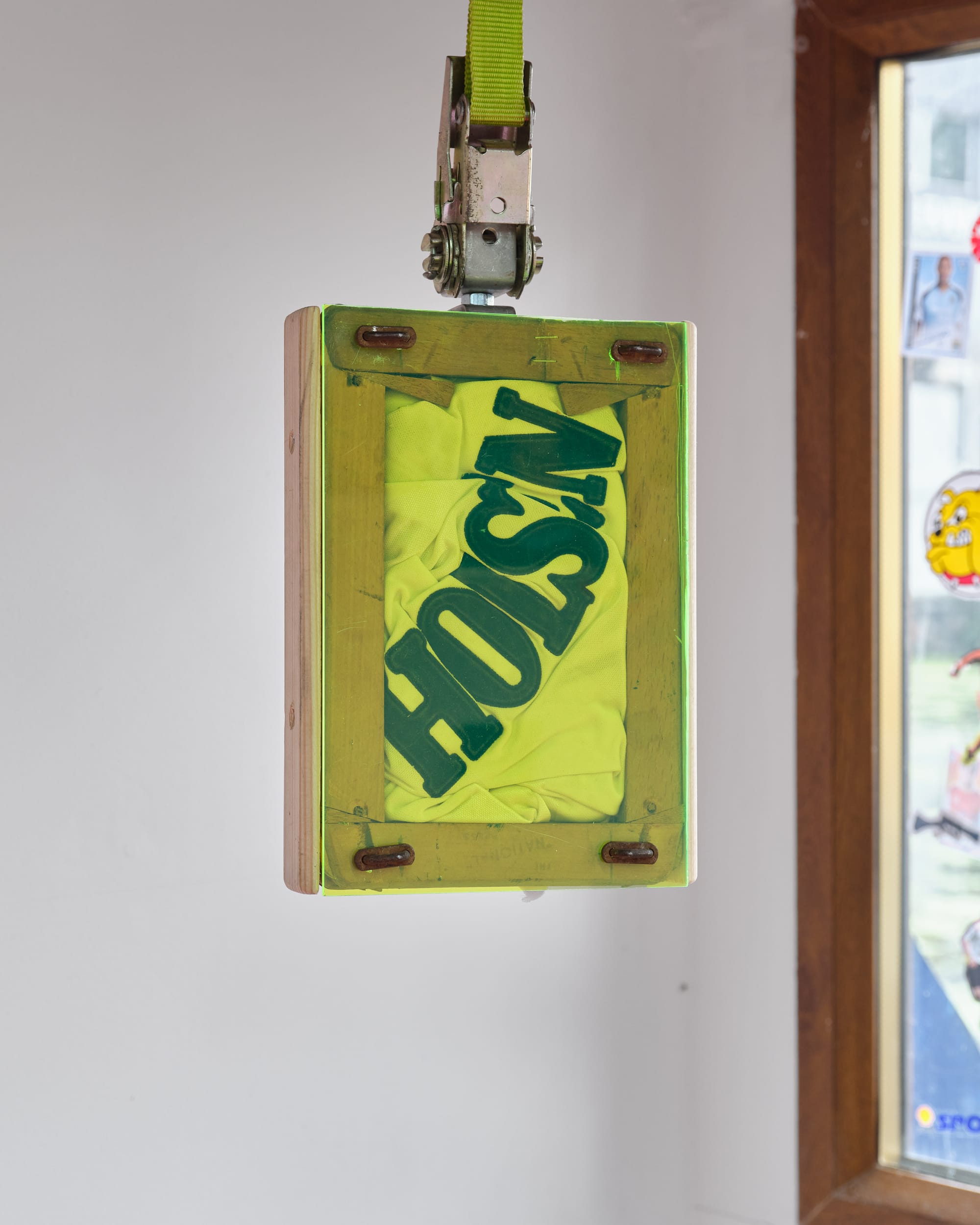
TOMMY: Your work draws on football, wrestling, sex work and fan culture. What connects these worlds for you?
EVA: Well, historically my work hasn't been so direct with its references (at least in relation to found imagery). I think wrestling and football is homoerotic and I think it ironic that many communities who watch these sports are so homophobic /misogynistic. The masculinity practised by these communities is one of dominance,supports the upholding of traditional family structures and discourages expressions of love between men. Yet, when Friday night footy is on and the boys are watching, 'their' women in the kitchen, they look at a heap of sweaty, muscular bodies (the ultimate physique) running into and connecting with one another, as they all sit feet apart because they aren't 'gay' - except when the team scores/wins, silence is broken, boundaries are crossed - men hug and touch.
The characters in the show are unfamiliar to me, it's not that I'm looking for vintage materials, it's that when I don't know the person in them it's easier to see them as a body - to objectify the male form. Football is interesting to me because between these moments of action, there are falls and tumbles and faces that are on the precipice of violence and orgasm. Ocean Vuong has this amazing bit of writing on how words men use to describe success in English are inherently violent; 'you killed it', 'destroyed that', 'fucked that up', 'scored that chick' and by extension, a goal.
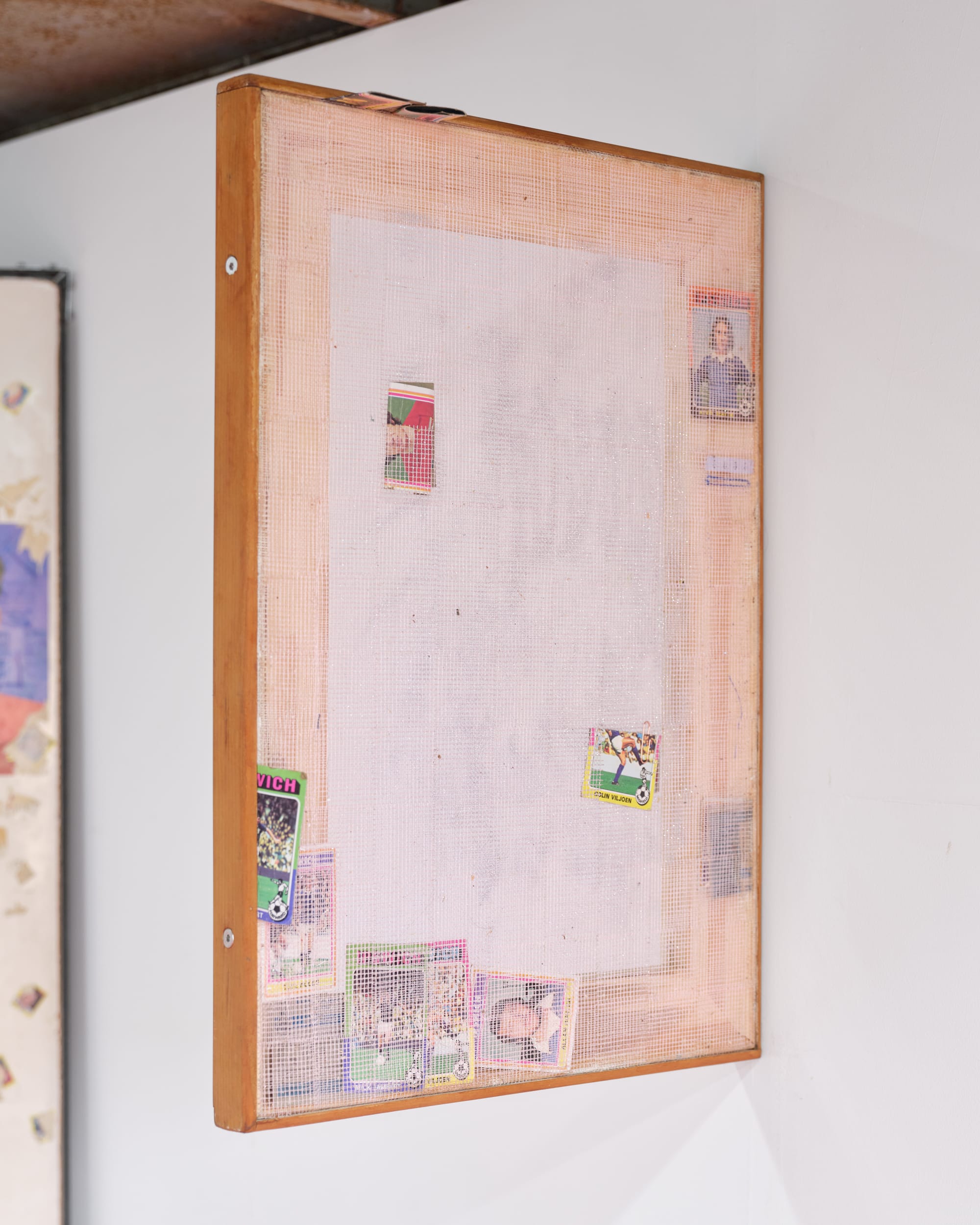
TOMMY: You use collectible cards in the show. Do they carry personal memories or stories for you, beyond their cultural associations?
EVA: Sort of what I touched on above, it's more the anonymity they offer that makes it easier for me to project onto. It's brilliant how many people have their own stories attached to the cards in the show. In Australia, when I was little you use to get rugby cards in chip packets. I wasn't allowed them very often but I traded all the cards I had to get this battered Andrew Johns card. He played for my home team (Newcastle Knights) - this is in the early 2000's. I think about how underrepresented women were in sports let alone on collectable cards; but conversely I asked my father-in-law to collect calling cards when he was in Las Vegas and they have so many similarities to American baseball cards - the idea of little boys and grown men collecting cards, keeping score, whether it be the women you've slept with or football cards - sport and sex can't be that different.
I was messaging an artist, Jordan McKenzie a couple of days ago about 'low' culture - I work with a lot of materials that fall into this category, I refer to my work as paintings/painting-sculpture and I don't believe in a hierarchy of materials. I felt excited when I found these cards, the little bends and knicks from use and the hands they've passed through. I can't 'paint' that, there is something so direct about working with the object and being able to appropriate the ideas it brings to mind that allows my work to 'work'.
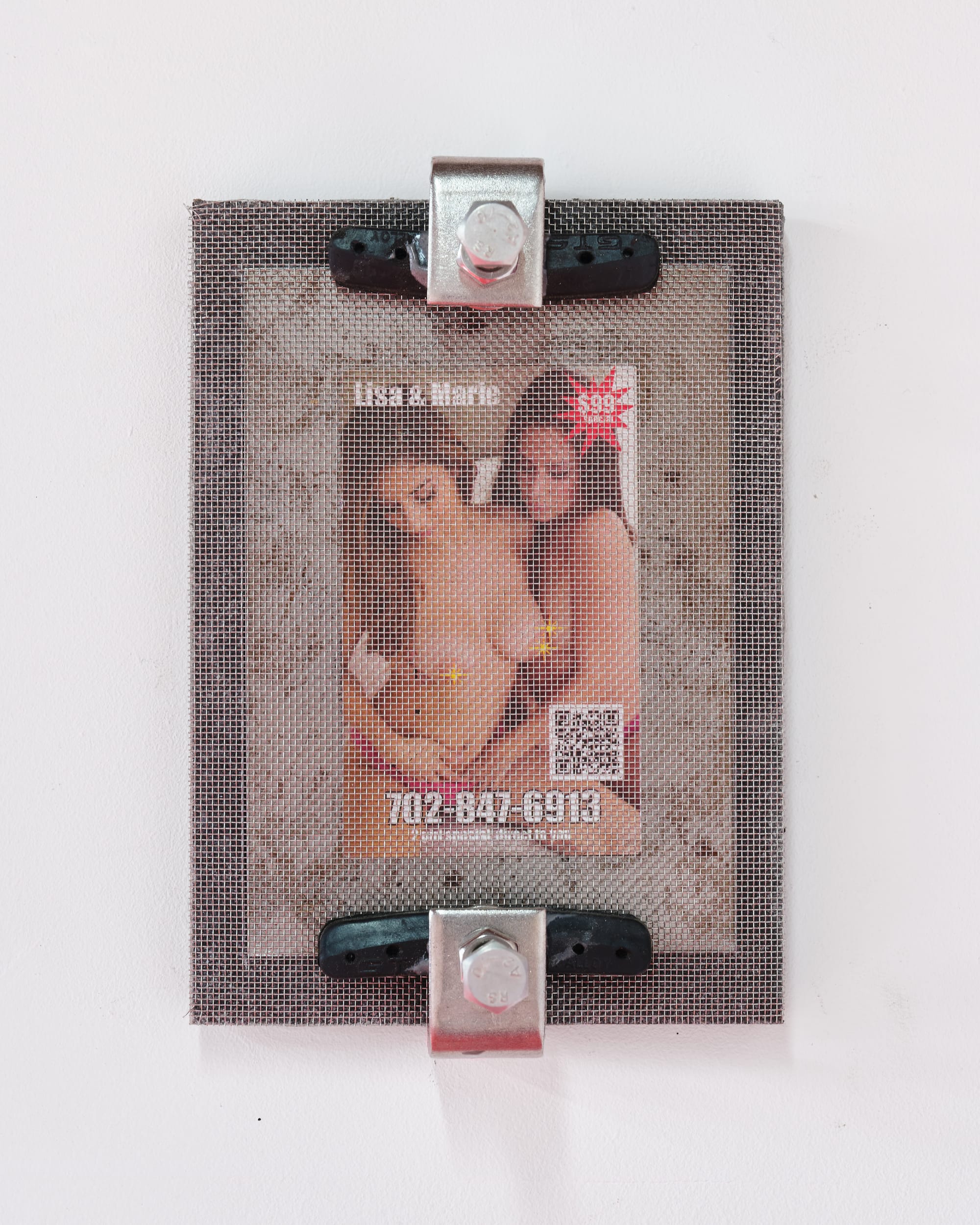
TOMMY: The pieces feel at times intimate and, in some cases, explicitly sexually charged, yet the erotic tension seems to hover or suspend, never fully released. Is this deliberate, and if so how do you play with that dynamic?
EVA: I think this comes from the literal tension in the works, in this show anyway, works like 'Holsten' and 'Red Stripe' look a bit like they're about to bust. The distortion of the images of calling cards and football cards between mesh feels a bit guarded and sexy in the same way one stocking on the floor is more exciting than a naked leg - maybe it's the idea of something happening or yet to happen. I think that's been a part of my work for sometime, but only recently has it been something I'm beginning to understand outside of the physical material. Making is everything to me and although the outcome is important, I always think making work answers questions and generates more questions.
TOMMY: Why exhibit SCORE! on a canal boat? How does that non-traditional setting change the way people experience your work?
EVA: There is no universe where I would say no to exhibiting on a boat - are you kidding? It's so cool, how often do such wonderful opportunities come along? I feel privileged to have had my first solo outside of a traditional gallery space. The ceiling alone sold me - the boat was only made in 2007. I was speaking to Morgan and he told me ceilings in canal boats often rust within a year - something about that strikes me as magical. Art doesn't exist in a vacuum and often the role of the white cube space is to be as minimal as possible to accommodate the work. I like the challenges posed by architecture and the way in which the work becomes tangled with its environment.
I think things are decidedly 'unfun' at the moment, people seem to be enjoying the change of setting and I love that random passers-by in different areas are able to experience the work. I spoke with an anaesthetist's assistant this week about the work and last week a proper lad in his tracksuit came in and started talking to me about hyper masculinity - you don't get that with traditional spaces so much.
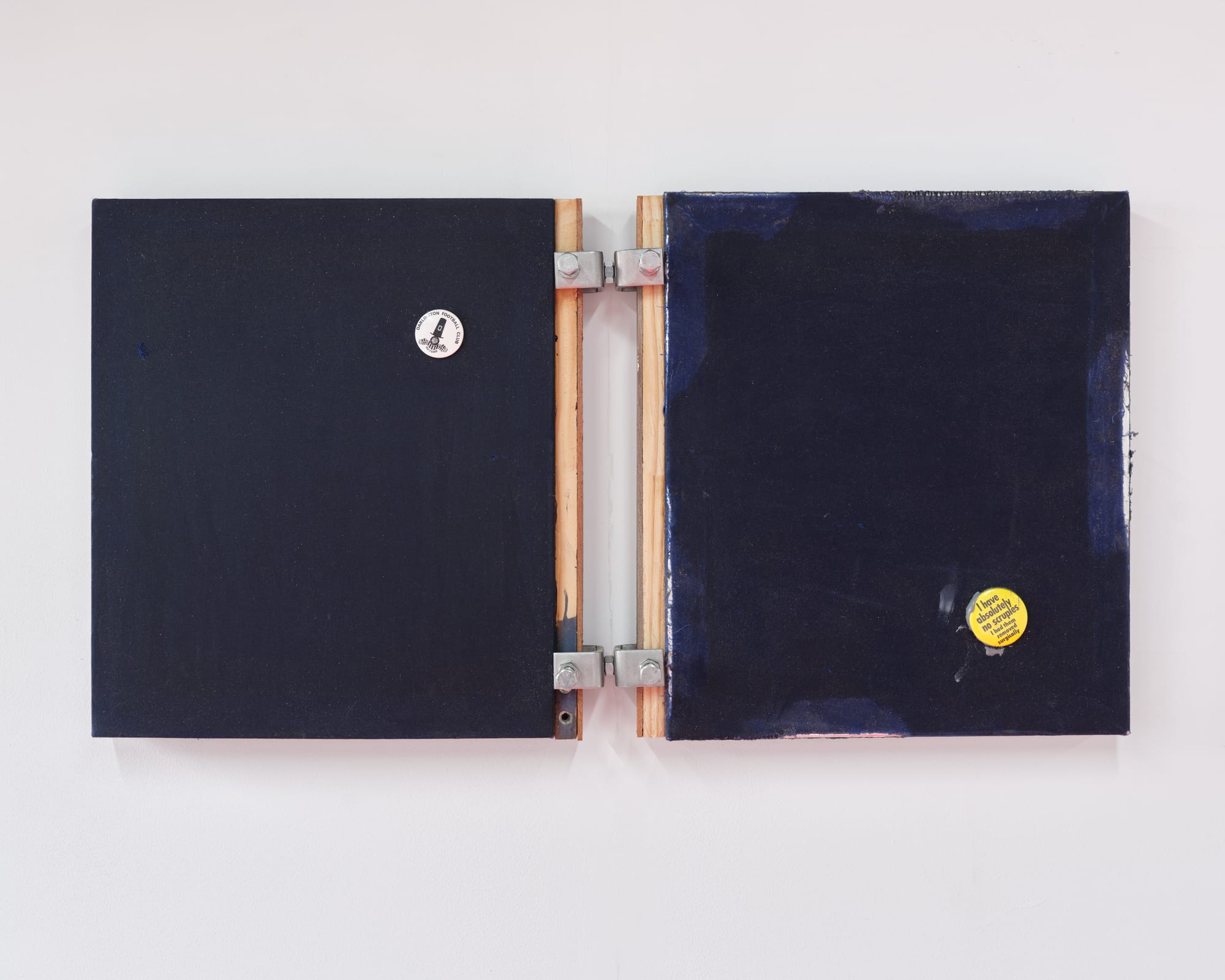
TOMMY: After SCORE!, what’s next? Are there new materials or themes you’re excited to explore?
EVA: I have a few group shows coming up and my second solo opens on the 6th of November at WIP Space Studios in Wandsworth. Most of the work is done but the space is a bit bigger than Split Riviera so will present problems of its own! I'm waiting till late September/early October to release the details, but its something I've been wanting to do since 2020 and it has to do with the politics of space/NASA. This show has been incredible for me to understand that I want each solo I do to be distinctive and have its own voice.
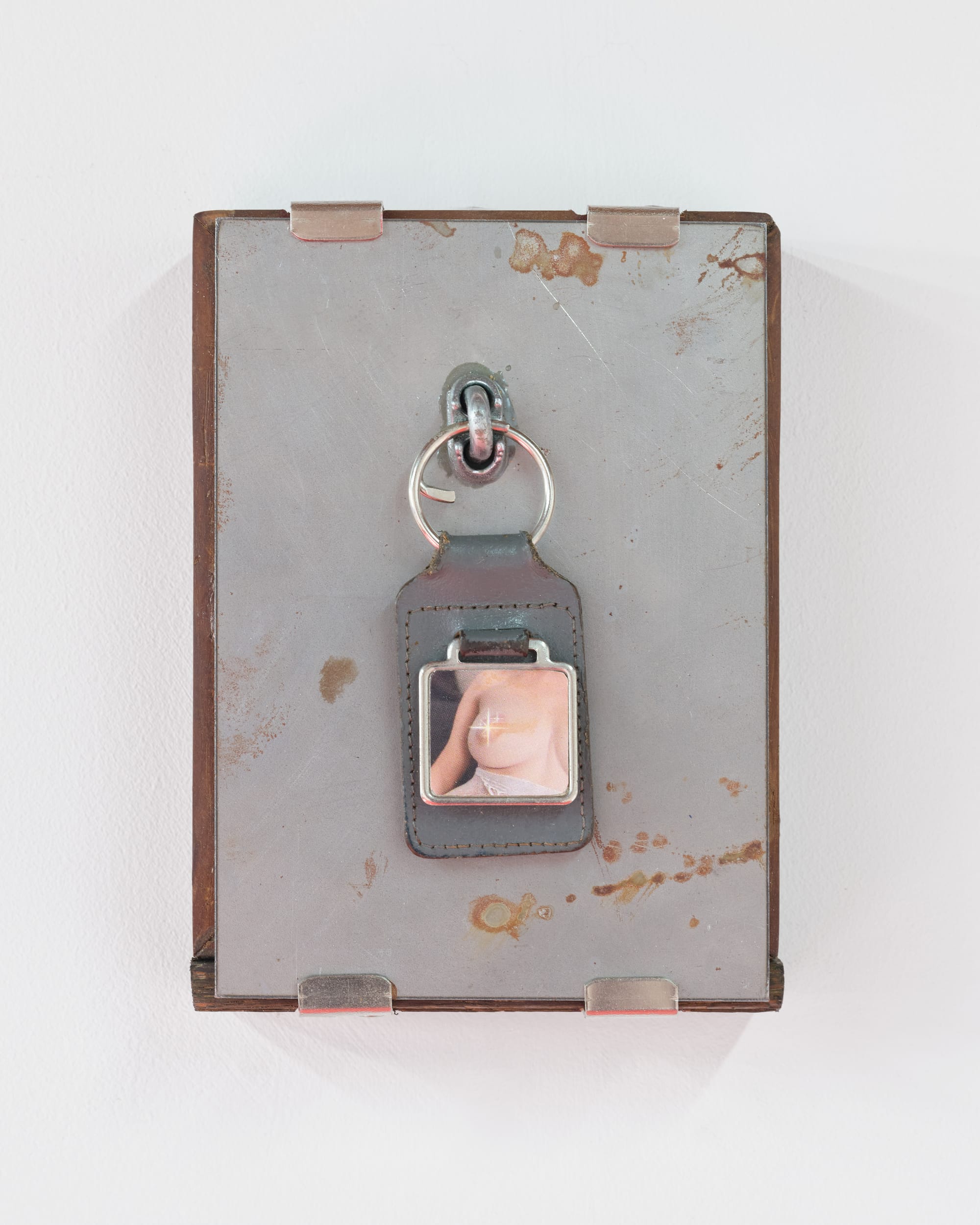
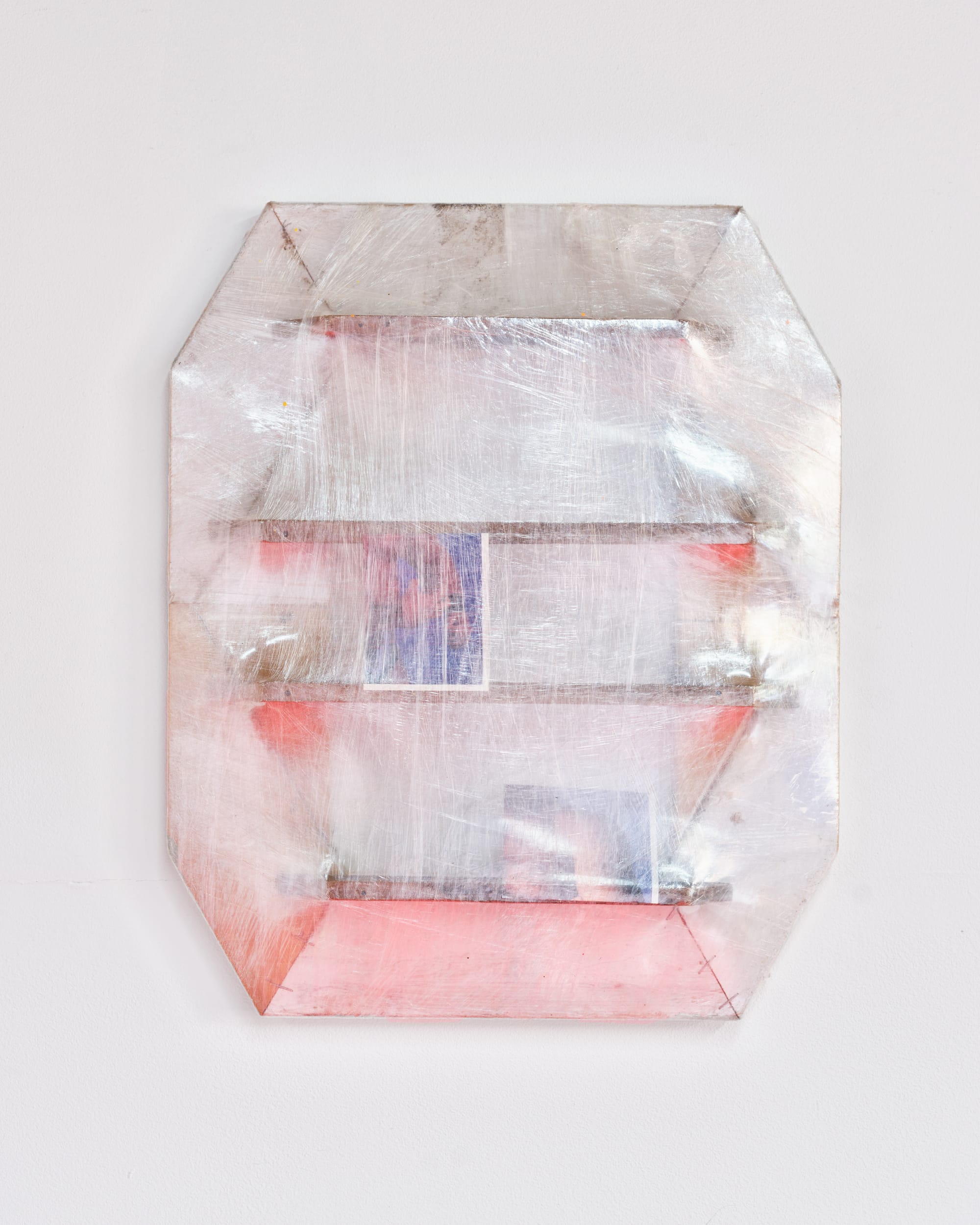
Australian-born and currently based in London, Eva Dixon works across painting and sculpture, with a practice rooted in process and material transformation. Her use of recycled and repurposed materials - combined with construction-based geometries - forms a visual language of tension, collapse, and duality. Through these compositions, Dixon explores the relationship between surface and structure, opacity and transparency, and the fragility of balance. Her work offers a critical lens on queerness, gender, labour, and the frameworks that shape them, dismantling binary logic through both formal and conceptual means. Dixon graduated with a BA in Fine Art from Central Saint Martins in 2023.



